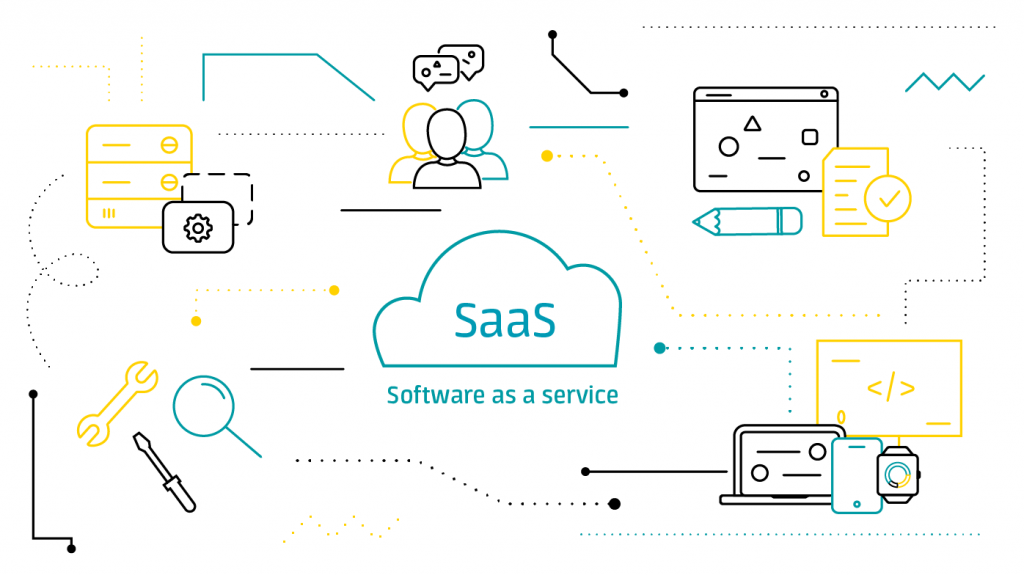Software as a service (SaaS) is one of the most common use of cloud. It allows user to connect to and use cloud-based applications via an internet browser. It could be anything from office software to unified communications among a wide range of other business apps that are available. Software creator host and maintain the servers, databases and the code that makes up the application.
SaaS has multiple type of benefits and disadvantages. Let us find out below:
Advantages
SaaS eliminates the need for companies to install and operate applications on their own computers or in their own data centers. This way costs for hardware acquisition, provisioning and maintenance, as well as software licensing, installation and support can be eliminated.
Accessibility
SaaS has the advantage of being able to run through an internet browser. Therefore, it does not matter which OS is used to access it. This is why SaaS applications versatile in a few different ways.
Simply said, it means that you do not have to worry if your operating system or other software will be compatible with SaaS applications or not. Furthermore, they are usable on mobile devices such as tablets or smartphone. They are created to be mobile-friendly so that they can be used whenever and wherever.
Updates and patches
SaaS is able to run in the cloud, the vendor can update their software anytime without disturbing users’ business operations. This is extremely different to on-premise software that will frequently needs a degree of compatibility and endpoint protection testing before regular updates and patches can even be applied.
This way SaaS can avoid the pitfalls of testing that will slow down the development process. Moreover, it gives users access to new functionality, while ensuring that security updates are implemented as quickly as possible. As to on-site applications that could remain vulnerable for attack before the IT service management staff have finished their testing.
Scalability
SaaS providers typically provide plenty of subscription options and flexibility to change subscription when required. For example, when your business grow, or when more users choose to use the service. In contrast, hardware needs to be bought more when expanding or when business decrease and the available hardware need to be shelved making it a loss.
Data and analytics
Since everything is running through a centralized network, this ensures that data can be easily collected and supported for analytics use. Businesses using SaaS software typically have access to analysis and intelligence resources and visualizations that provide useful insights into business processes. Hence, it allows easy workflows and cost savings ways. Since access depends on a paid subscription, vendor does need to worry about piracy that could cost the provider and harm both access and pricing models.
Disadvantages
Insufficient data security
Issues such as identity and access control need to be address before we allow a third party to entrust this sensitive data. In particular we must take strict measures when it comes to accessibility from a mobile device. It should be keep in mind that deactivating an ex-employee can be troublesome because we use multiple cloud services.Also, it is very time-consuming because every customer make sure that the supplier can control and measures the various data types.
Lack of control
In-house software applications offer a high degree of control for business owners. Third-party provider will have the control. This is not suitable for people that is not comfortable for someone else to manage critical business applications.
Risk of failure
SaaS is based on internet connection. Therefore, we will lose access to our software or data when the internet service fails.
Slower speeds
SaaS applications run slightly slower than server applications. Although it is not that bad, you still need to be ready for the possibility of sluggish computing environment.
Difficult software integration
Business using multiple SaaS applications or wishing to connect SaaS to existing local applications face the challenges of software integration. The internal APIs and data structures can not be well integrated with the external software. Thus, it is important to always carry out compatibility tests with all SaaS applications to see if we get the desired result.
Overview
SaaS has a lot of benefits to offer that should work with both suppliers and users. While some organizations would prefer to set up their own cloud management services and use orchestration for both devices and sites to access their own data. However, for small organizations, they can benefit a lof from SaaS as SaaS give them the opportunities that would help them grow and expand.


